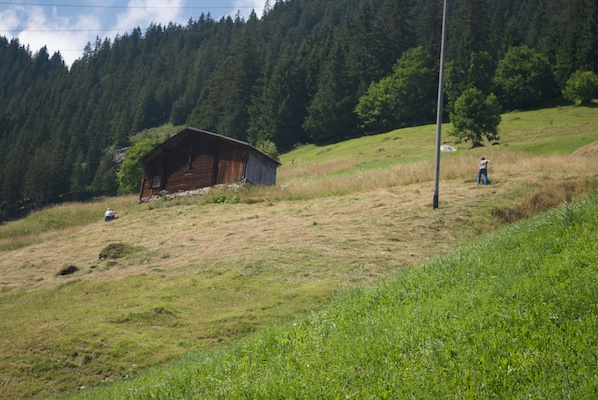
Aesthetics may have more to do with protecting land as a nature reserve than we would like to admit. Wetlands are a perfect example. Few people would consider wetlands to be “beautiful” landscapes—they offer few vistas, are difficult to navigate, and can appear rather homogeneous to the layperson. To many, a swamp is a swamp is a swamp.
Conservation success may lie in managing these landscapes not only for their natural functions but their appearance as well. Though this may seem antithetical to the some environmentalists, in reality nearly all landscapes are managed by people, either through action or inaction. The North American landscape 500 years ago was shaped by American Indians and their use of fire. Decades of fire suppression have played a similar role, albeit with strikingly different results.
Fire suppression has drastically altered one national treasure in the U.S.—Yosemite. Ponderosa pine trees have grown into curtains that block many famous vistas and choke the once open valley floor. In response, the National Park Service has a plan to restore many now veiled vistas. Similar discussions are taking place on Europe, where countries are working to implement the European Landscape Convention, which seeks to preserve the character of the countryside. Such plans likely have their detractors. After all, planning with such a broad brush is subjective, and not everyone’s opinions will be the same.
One study, though, did find a few overarching themes. It explored the link between people’s aesthetic preferences and cold, hard measures of landscape complexity. Participants were shown a series of computer-generated images of fictional landscapes, each carefully constructed to reflect a different measure of landscape complexity, and asked which they preferred. Time and again people selected scenes with fairly specific qualities: They preferred vistas looking onto two types of cover, such as forest and grassland, that occurred in uneven amounts—more of one or the other was most pleasing. They also were drawn to views where the cover types were clumped here and there, as opposed to aggregated in two giant swaths.
Unfortunately, reality may not be that straightforward—the study is not without its shortcomings. First, the authors presented each image from two different viewpoints, and participants preferred the second viewpoint more than the first. It’s a pattern that screams for explanation, of which there was little. Also, the images were computer generated. Though this let the researchers manipulate the landscapes as they pleased, the images did not have the allure of a real photograph, which may have turned off some participants. Lastly, the survey participants were all Scottish, so the results may be skewed by a preference for their native landscape, one that is dominated by two cover types—forests and grassland. Not only is this a decidedly Western view, it’s a particularly local one.
There are more studies on landscape preference that I’ll be covering in the future, but this one stood out for its desire to link preference with concrete measures of landscape complexity. It’s a good first step, and one I’d like to see followed with studies that use photographs of real landscapes—with the metrics derived from satellite or aerial photographs—that are shown to people of many different cultures. Perhaps then some general trends will emerge.
Source:
Ode, A., & Miller, D. (2011). Analysing the relationship between indicators of landscape complexity and preference Environment and Planning B: Planning and Design, 38 (1), 24-40 DOI: 10.1068/b35084
Photo by the author.